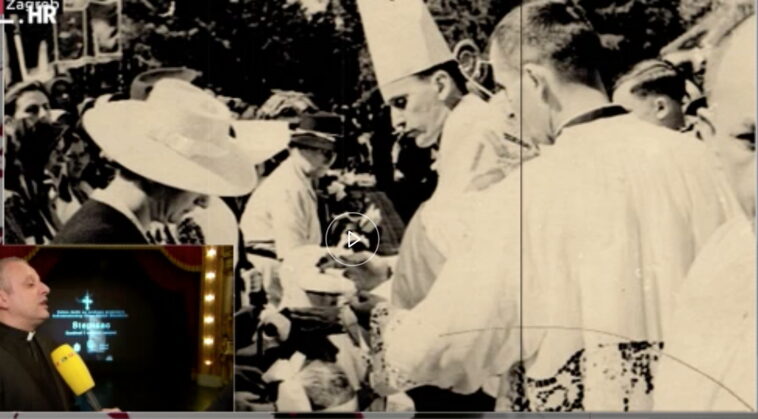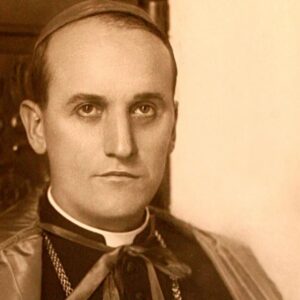On the occasion of the 60th anniversary of the death of Blessed Cardinal Alojzije Stepinac, the Croatian Catholic University and Interfilm held at the Croatian National Theatre in Zagreb on Saturday, February 8, the premiere of the new documentary film “Stepinac: The Cardinal and His Conscience”, authored by Croatia’s acclaimed writer, journalist, screenplay writer and its director Visnja Staresina.
Reportedly, Staresina has been preparing for the film for ten years. Her aim is said to have been to avoid the way Cardinal Stepinac has so far been portrayed through the Croatian-Serbian disagreements, in which the Serbian propaganda machine had constantly insisted on painting Cardinal Stepinac as a Ustashe collaborator despite the fact that post-2000 historical research, when Yugoslav Archives were open to researchers in Croatia, prove beyond any doubt that Stepinac in fact rescued many persecuted Jews. Of particular note are most thorough historical research findings by USA historian dr. Esther Gitman.
“When I started working on the film, I was surprised at the way in which Alojzije Stepinac was perceived out there. For example, my reference was the American media out there, and I tried to make sure that the participants in the film are the people who are not part of this existing paradigm,” said Staresina last week.
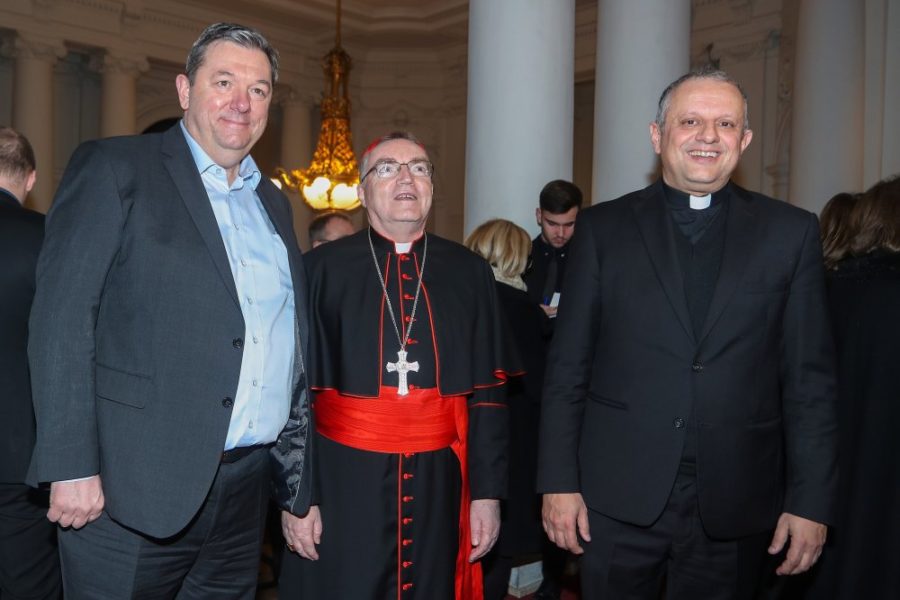
In this new documentary, Stepinac’s involvement in rescuing Jews during WWII is enveloped in the story of Renata, a girl whose entire family disappeared in the Holocaust during WWWII in Croatia. She emigrated to Israel in 1952 and decided to forget everything. The film reconstructs and follows the rescue of Renata Bauer.
In this documentary film “I let him (Stepinac) speak through his sermons, through his letters, through his spiritual testament, where you see him condemning racism since 1937, not 1942 or ’43. New York Times, articles published by the Jewish News Agency in 1943, which mention sermons from the Archbishop of Zagreb. It wasn’t very simple to say these things at the time, and it wasn’t easy to become news in the New York Times,” Staresina comments on her film.
This documentary film has been translated into English so that it can reach more people throughout the world, and the aim of its author is to get as many people as possible to know the truth about Cardinal Stepinac.
Among other things, the film “Stepinac: Cardinal and His Conscience” reveals how Stepinac, as a human being, a man and Archbishop of Zagreb, faced and dealt with the greatest challenges of the 20th century. For Alojzije Stepinac that challenge was, undoubtedly, how to execute good deeds and save as many persecuted people from sure death as possible. This indeed was no easy task in the madness of a vicious war where the fight for independence (of Croatia) and the fight against that independence (to retain Yugoslav federation of states) took the nation into often dark pursuits for victory (as all wars do), regardless of whose that victory may surface as the outcome of the war. The film delves into the challenge of talking about the global and universal significance of Stepinac’s work; it explores the reasons why his character and the works that accompany him are not globally accepted and grounded on the truth to this day.

Apart from emphasising the relevance of Stepinac’s exemplary actions and morality, which contain messages that are applicable universally to this day, this documentary film, filled with Stepinac’s courageous and righteous actions despite fatal adversities, fits so aptly into the story of Croatia within the 20th century Europe.
Stepinac’s personal involvement in organising the rescue of Jews during WWII Croatia is presented in this documentary film through interviews with historians, researchers, as well as through personal testimonies of Holocaust survivors and their descendants; likewise, through testimonies of descendants of families who participated in these WWII rescue operations.
At the film’s premiere, its director and screenwriter Visnja Staresina stated that her guiding idea was to make a film that would show why Stepinac was globally relevant in his time, not just at Croatian local levels. “From the moment he was elected the youngest bishop in the world, through his anti-racist sermons reaching out from conquered Europe, from the Independent State of Croatia to the free world as a rarity, through the trials that made him globally known and the condemnation of the trials that provoked major protests from New York to Chicago and Dublin seeking his release. Finally, at the time of his death, leading commentators wondered what would happen between the Church and the communist regimes now,” said Staresina.
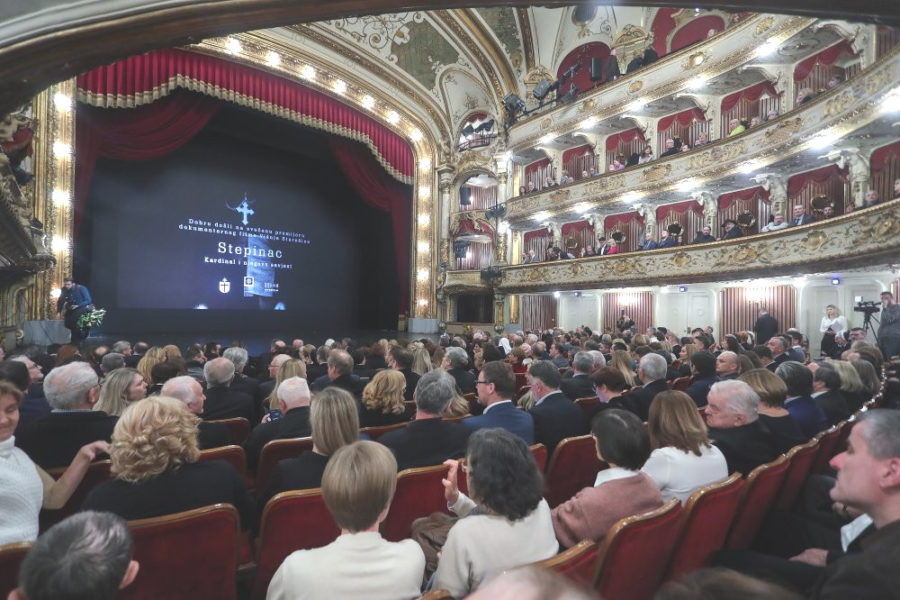
The Catholic University of Croatia in Zagreb joined this documentary film project primarily because Blessed Cardinal Stepinac, in addition to being an important church and historical figure, is also the patron saint of that University. Since its founding in 2006 the University has been involved in various ways with view to making the truth about blessed Stepinac known worldwide. Many public lectures have been given about him, students had opportunities to study the character and work of Blessed Stepinac through elective subjects, and professors participated in various conferences and scientific conferences. The Croatian Catholic University, together with the Archdiocese of Zagreb in 2016, organised a scientific conference attended by historians from Croatia and Serbia, and a large collection of papers on the Blessed Archbishop Stepinac and the Serbs in Croatia in the Context of World War II and Post-War was published. Together with the publishing house Christian Contemporaneity (Kršćanska sadašnjost), the University also published a book by Dr. Esther Gitman, “Alojzije Stepinac – Pillar of human rights” (2019).
“We are convinced that with the image, the word and the new testimonies presented in this film about blessed Alojzije will once again show the greatness of a man who, in the difficult years of Croatian and European history, was faithful to his call, resolutely and courageously, advocating especially for the endangered, led the Zagreb Church. To those who had not met him the film will give the opportunity to do so and encourage them to reflect upon his person. And also, for those who disagree with us the film gives the opportunity to evaluate his work and gives another documented insight into his life and work,” said at the premiere the Croatian Catholic University Rector Dr. Zeljko Tanjic.
The wheels of justice turn slowly, but grind exceedingly fine. Have you ever heard that quote? It’s actually a paraphrase of an ancient Greek proverb. The Greek biographer Plutarch referred to this proverb in the first century A.D. when he made the following complaint. He said: “Thus, I do not see what use there is in those mills of the gods said to grind so late as to render punishment hard to be recognised, and to make wickedness fearless.”
One of Henry Wadsworth Longfellow‘s translations was a 17th century poem, ‘Retribution,’ by Friedrich Von Logau: “Though the mills of God grind slowly, yet they grind exceeding small; Though with patience he stands waiting, with exactness grinds he all.”
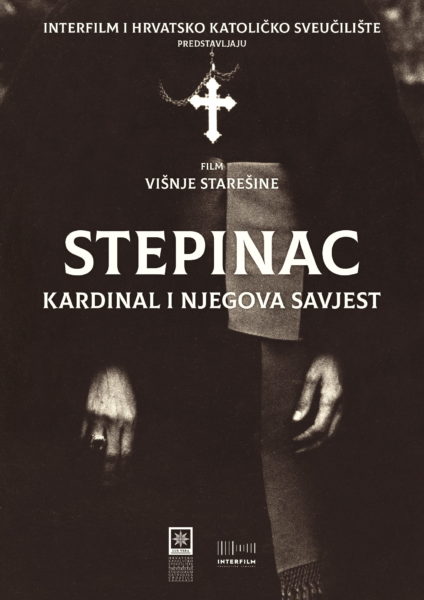
The analogy I venture to bring here is related to the fact that even though ample evidence of Alojzije Stepinac’s good deeds in rescuing Jews and other persecuted people during WWII those to whose advantage it is to continue suppressing this truth and continue promoting the Serb-led (or communist Yugoslavia-led) fabrications about his collaboration with the Nazi’s are not likely to abandon their wicked ways any time soon. Why? Well, to bring out the obvious, it is of political advantage to them to continue walking in dark corridors where truth has no chance of being illuminated. And so, regretfully, instead of turning in the right direction, the wheels of justice for blessed Alojzije Stepinac on the international level have mainly been turning in the other direction, grinding out stones that become even coarser. That has sadly been the power of politics and political interests.The problem is that political interference which has had a devastating effect on the truth ever since the trumped-up charges against Stepinac by Yugoslavia’s communist regime in 1945 continues in many ways. The communist Yugoslavia totalitarian regime ensured that the willingness and ability to investigate injustice and corruption that would show the communists up as liars and falsifiers of history was suffocated and incapacitated. This went on until 1990’s when Croatia broke away from Yugoslavia and only since then were all researchers able to access the archives and the truth. But even when a significant mass of that truth was found to not resemble the truth communists were peddling for decades, that illuminated real truth continued to be treated with some scepticism and avoidance by even the politicians in power in Croatia, majority of whom belonged to the communist echelons of former Yugoslavia! Such cold and apparently dismissive reception of the truth, which in fact redeems Alojzije Stepinac from all the communist trumped-up charges, from all the false accusations regarding his deeds or “omissions” during WWII, is in fact part and parcel of what still goes on in Croatia: corruption and fraud perpetrated by well-connected politicians and by their allies and like-minded persons in the country and outside it. If it weren’t like that, then even common sense tells us that the Croatian government would have long ago stood behind the clearing of Stepinac’s name through research and presentation of findings and opened up its “wallet” to support such projects. It has not done that and the presentation of truth that is of national importance (because the brush that tarnished Stepinac also tarnished the freedom-loving Croatian people) still remains within the realms of good will of people and institutions willing to back such projects financially.
This is why this documentary film by Visnja Staresina (2020), why books by Esther Gitman (“When Courage Prevailed The Rescue and Survival of Jews in the Independent State of Croatia 1941-1945”; “Alojzije Stepinac – Pillar of Human Rights”) and dr. Robin Harris (“Stepinac: His Life and Times”), the documentary film “When Truth Prevails” authored by Jadranka Juresko-Kero (2011) and other many works on this subject are crucial spokes on the wheel of justice and truth not only regarding Alojzije Stepinac but also regarding Croatia during WWII and after. The wheel of justice turns in the right direction by the force of these spokes despite the political sabotage of the truth. Ina Vukic


